Behind Lenovo's plan to become king of the smartphone
It's number one in PCs - can it emulate this in mobiles?

It was a phone call that started it. A phone call to sell a phone business. Eric Schmidt, Google's executive chairman, rang Lenovo and asked if it was still interested in buying Motorola Mobility - a company that Google had acquired just three years previous.
The answer was a resounding 'yes' and Lenovo's big move towards mobile dominance was revealed.
For both companies this is a marriage of convenience. The $2.1 billion deal is set to go through in the next few months - it still needs approval from the courts in China and the US - and once it does Google will have found a company that will take away its hardware headache while it retains Moto's patent power. On the flipside Lenovo is getting the helping hand it needs to pursue the lucrative mobile avenues of the US and Europe.
The deal is a huge one for Lenovo and a massive part of its future going forward. But to understand just how it got to being on the precipice of global smartphone domination you have to look to its past - something TechRadar did when it went to China to learn more about how the company operates.
Chasing characters
2014 marks 30 years for Lenovo as a company. Born in Beijing in 1984, Lenovo started out as a reseller of IBM products before making its name when it invented the Han Character Insertion Card.
This technology significantly shortened the number of keystrokes it took to input Chinese characters, making the process twice as quick and proving to the population of China that computers were something that was needed not just for business but for helping in the education of children.

Before long it was creating its own computers, using older processors that were sold back to China when upgrades were made. So, when the West was flooded with computers packing 486 Pentium processors, China were given the 386 variants and so on.
Get daily insight, inspiration and deals in your inbox
Get the hottest deals available in your inbox plus news, reviews, opinion, analysis and more from the TechRadar team.
Then in 1993 when the Chinese government 'opened up' the country to western brands that wanted to compete in the market, Lenovo began selling computers under its English name of Legend. At that time it was 26th out of 26 companies competing for PC dominance in China. By 1996 it was top.
When the second wave of Western brands hit China in 2000, Legend had a plan to make sure it could retain its market share and fight the influx of cheap computers from the US and beyond - it came in the form of a button.
In 1999 access to the internet was a complicated thing for consumers, so Legend simplified the process with the Tian Xi, a desktop computer with one-button web access.
Couple this with offers of landline access and a year's free internet and this computer raised the company's market share by 6%. To put this into context, at the moment only Apple can command that much trading excitement with one device.
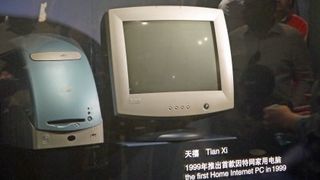
Skip to 2005 and Legend became Lenovo (a portmanteaux of Legend and Novo, greek for 'new') and to show the world how far it had come, it bought the ThinkPad computing arm from IBM, the very company whose products it made a living from back in 1984.
30 years on and Lenovo is the number one computer seller in the world.
PC Plus points
The person who oversaw this careful maneuvering through the computing space was Yang Yuanqing. YY, as he likes to be known, is now CEO of Lenovo and he is hoping to do the same again with mobile, hence the Motorola buyout.
The deal is set to be completed in the next few months and in many ways can be seen as the brand's mobile equivalent of the ThinkPad - a brand that can bridge the global gap where the Lenovo name doesn't quite reach.
This all clearly points to where Lenovo is going next: to a PC Plus world, where mobile and PC categories are blurred by the rise of tablets.
Although this acquisition alongside the potential purchase of IBM's server division tested the confidence of investors when they were announced earlier in the year, YY told TechRadar that Motorola was a brilliant buy for Lenovo.
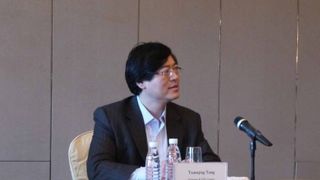
"I definitely think the Moto deal is the perfect thing for Lenovo's strategy. We got a good deal at a good price," he said.
"We need to globalise our smartphone business. But to become stronger and faster we needed to be bold. Motorola gives us the elements we need to globalise and compete. It is a well known brand that has strong relationships with carriers. "
As for how investors reacted he explained: "Market reaction is not important to us. We understand our strategy. We understand what we need and what we want to get."
Hello Moto
Lenovo is out to do something that many PC-focused companies have failed to do before: become a global mobile force.
Its current figures prove that in many ways it is already achieving this. In China it is number two only to Samsung when it comes to tablets and phones. And it is currently making similar gains in India, Indonesia, Russia, Thailand and Vietnam.
All of these countries recognise the Lenovo brand as a mobile one but this simply isn't the case for the US and Europe - two of the biggest smartphone areas - and this is where Motorola comes in. Currently Lenovo is the number four phone manufacturer in the world, behind Apple, Samsung and Huawei, mainly due to its popularity in China, and it believes Moto is the key to getting even higher up the ranks.
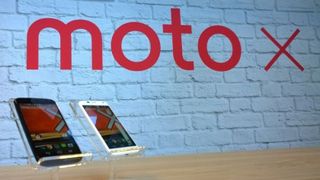
"Motorola is a good brand with worldwide awareness. This is the company that invented mobile phone, not just smartphones," said YY.
"Motorola will give us a good retail relationship. It has a strong portfolio of IP and rights and will help us become one of the clear global leaders.
"We will not be satisfied with number three, we will want to be number two in the future."
Wuhan clan
This intent was made clear when TechRadar visited Lenovo's latest manufacturing plant in Wuhan, a thriving city that's capital of the Hubei Provence in China.
Wuhan is not a city that many will be familiar with but there's a good bet you have a gadget that's been manufactured in its confines. Alongside Lenovo there are a number of other big product manufacturers - including Apple's go-to manufacturer Foxconn.

Opened in December 2013, in an area called the Optics Valley, Lenovo's Wuhan Industrial Base has the ability to produce 100 million mobile devices - which just happens to be the number of smartphones and tablets Lenovo wants to sell this year.
Currently there are 3,000 people working at the plant but there's room for 8,000. And, according to Lenovo, most of the workers come from the neighbouring universities.
Jack Zhu, Lenovo's manufacturing lead executive for mobile, told TechRadar that it takes around seven minutes to make a phone and everything in the factory is done by people power.
"There's no automation, everything is checked by our workers. In all 34 people work on making one device," he said.
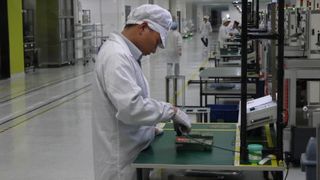
Think ThinkPad
Even without the Moto deal, mobile is definitely taking precedent within Lenovo. Recent figures showed that for four quarters in a row, tablets and phones have outpaced the sale of PCs.
Its new strategy smacks of this too. According to YY it wants to protect PC and attack PC Plus, a division that was announced in 2010 that essentially marries PCs with tablets. It sees itself as number two in this area, with Apple at number one - a spot YY is eyeing up.
"In the past couple of years, tablet has canibalised the PC market but now this is changing. We now believe tablets have become part of the PC," said YY.
"Tablets are PCs without keyboards and we are a proven winner in PCs. The Yoga tablet helped us have our best year. It is shaking up the market with unconventional design and we want to become number one in the broad PC market."
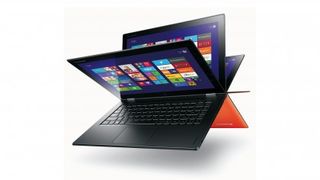
To achieve this, Lenovo needs Motorola to work for them. It needs the brand to plug the gaps in the market that it can't currently reach with its Lenovo range of phones, much like the ThinkPad name did back in 2005.
And this brings us full circle to that initial phone call. If Lenovo hadn't contacted Google as soon as it had bought Motorola, the deal may never have happened. It was a long game of second guessing that eventually worked in its favour.
"We first approached Moto when Google first announced the acquisition. Google was the owner of Android and we thought maybe it wouldn't want to own the hardware side of the business," said Liu Jun, EVP President of mobile for Lenovo to TechRadar.
"To us, it was clear that Google wanted to own the IPs. So we thought we had an opportunity to own the hardware side.
"Google initially tried to do the hardware itself but then a year and a half later they reconsidered their strategy. The end of last year we got a call from Google, from Eric Schmidt. We were asked if we still had the interest.
"We always thought Motorola was a good buy so we said yes and signed the contract quickly."
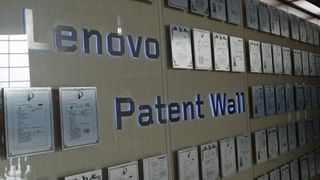
Without Motorola, Lenovo managed to increase its mobile shipments to 50 million smartphones and 9.2 million tablets in 2013 - a growth of 60% year on year. This helped Lenovo achieve its most successful year ever.
So what could happen with Motorola? YY wants this number to be at least 100 million which is a high prediction but maybe the signs that Moto is the company to help with this were there way before a purchase was proposed.
"My first phone was a Motorola," explained YY to TechRadar. "And hopefully now that means it was a Lenovo."
Marc Chacksfield is the Editor In Chief, Shortlist.com at DC Thomson. He started out life as a movie writer for numerous (now defunct) magazines and soon found himself online - editing a gaggle of gadget sites, including TechRadar, Digital Camera World and Tom's Guide UK. At Shortlist you'll find him mostly writing about movies and tech, so no change there then.

